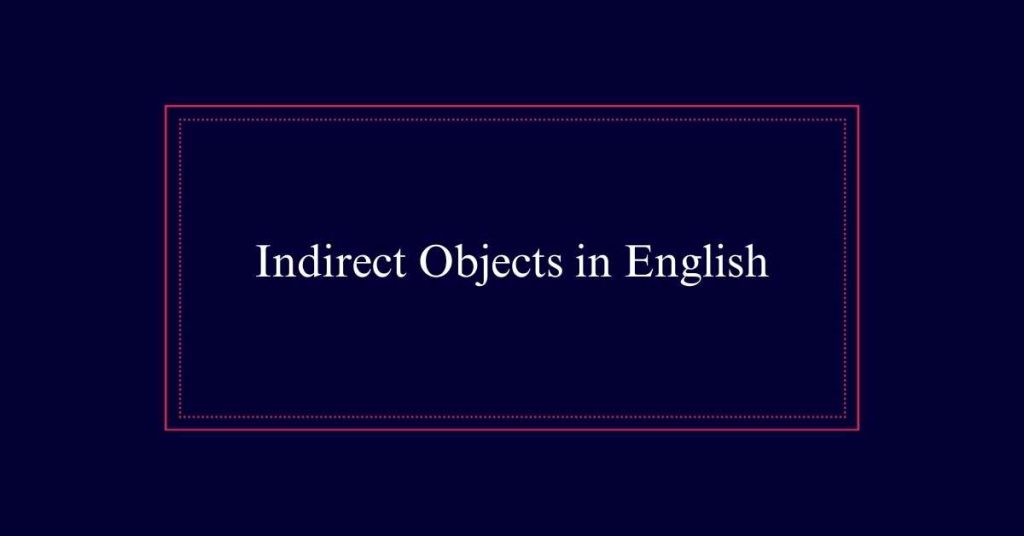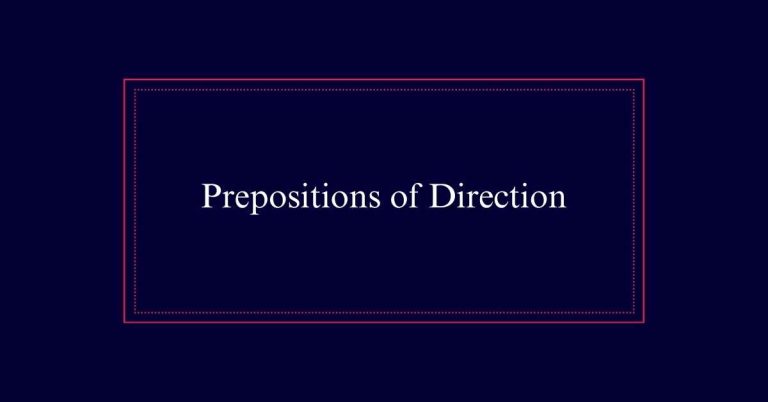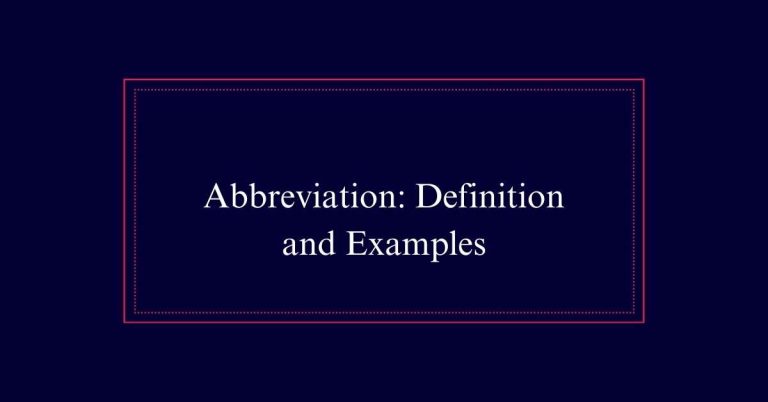Indirect Objects in English
In English, an indirect object is a noun or noun phrase that receives the direct object and comes before it. It is used with transitive verbs to show who benefits from the action. For example, in the sentence “She gave him a gift,” “him” is the indirect object because it receives the direct object “a gift.” Other common verbs that use indirect objects include “send,” “tell,” and “show.”
Understanding Indirect Objects
An indirect object is a noun or noun phrase that receives the direct object in a sentence. It is used with transitive verbs and always comes before the direct object.
Unlike objects of prepositions, indirect objects are part of the main clause. Using indirect objects can make writing more direct and efficient. They can be individual nouns or more detailed noun phrases.
For example, in the sentence ‘She gave her friend a gift,’ ‘her friend’ is the indirect object receiving ‘a gift,’ the direct object. Pronouns can also serve as indirect objects, such as ‘him’ or ‘them.’
Role in Sentence Structure
Indirect objects play an essential role in clarifying who or what receives the direct object in a sentence. They follow the verb and precede the direct object, creating a clear flow of information.
For example, in ‘She gave him a gift,’ ‘him’ is the indirect object receiving ‘a gift,’ the direct object. This structure enhances readability and comprehension. Indirect objects, which can be nouns or pronouns, specify the beneficiary of the action.
Indirect Objects and Verbs
Understanding the interplay between indirect objects and verbs is key to mastering sentence structure. Indirect objects work specifically with transitive verbs, which can take both direct and indirect objects.
Here are four important points to take into account:
- Verb requirement: Only transitive verbs can have indirect objects.
- Action distribution: Indirect objects receive the direct object, which in turn receives the action of the verb.
- Verb examples: Common verbs that often use indirect objects include ‘give,’ ‘send,’ ‘tell,’ and ‘show.’
- Object pronouns: Indirect object pronouns like ‘him,’ ‘her,’ and ‘them’ are used to replace nouns, making sentences clearer and more concise.

Placement Rules
Placement rules for indirect objects are essential for constructing grammatically correct sentences. Typically, the indirect object appears before the direct object in a sentence. For example, in ‘She gave him a gift,’ ‘him’ is the indirect object, and ‘a gift’ is the direct object.
This structure guarantees clarity and smooth reading. However, when using a prepositional phrase, the indirect object follows the direct object, as in ‘She gave a gift to him.’ Both structures are correct, but the former is more direct.
Differentiating From Prepositions
Many often confuse indirect objects with objects of prepositions in English sentences. Understanding the distinction is essential for accurate sentence construction. Indirect objects are part of the verb phrase and receive the direct object, whereas objects of prepositions follow prepositions and are not directly related to the verb’s action.
Here are key differences:
- Placement: Indirect objects appear before the direct object, while objects of prepositions follow prepositions.
- Function: Indirect objects indicate to whom or for whom the action is done. Objects of prepositions provide additional details.
- Structure: Indirect objects are linked to the verb directly. Objects of prepositions are connected via a preposition.
- Identification: Removing the preposition often leaves an indirect object, but not an object of a preposition.
Efficiency in Writing
Recognizing the distinction between indirect objects and objects of prepositions can greatly enhance the efficiency of your writing. Indirect objects streamline sentences by directly naming the recipient of the action. This method is more concise than using prepositional phrases, which can add unnecessary complexity.
For instance, ‘She gave him a gift’ is more direct than ‘She gave a gift to him.’ Using indirect objects reduces wordiness and clarifies meaning. This can be especially beneficial in professional and academic writing, where clarity and brevity are valued.
Noun Phrases as Indirect Objects
Using noun phrases as indirect objects enriches sentences by providing more detailed information about the recipient of the action. A noun phrase includes a noun and its modifiers, creating a more specific and vivid picture.
For example, in the sentence ‘She gave the little boy in the blue shirt a toy,’ the noun phrase ‘the little boy in the blue shirt’ serves as the indirect object.
To understand how noun phrases function as indirect objects, consider the following points:
- Noun and modifiers: The noun phrase includes the noun and its descriptive words.
- Position: The noun phrase appears before the direct object.
- Function: It identifies to whom or for whom the action is done.
- Detail: It adds specificity and clarity to the sentence.
Using Pronouns
Pronouns play an important role in efficiently substituting noun phrases as indirect objects in sentences. They streamline communication by replacing longer noun phrases, making sentences shorter and clearer.
For example, in the sentence ‘I gave the book to Mary,’ ‘Mary’ is the indirect object. By using a pronoun, it becomes ‘I gave her the book.’ Common indirect object pronouns include ‘me,’ ‘you,’ ‘him,’ ‘her,’ ‘us,’ and ‘them.
Direct Vs. Indirect Objects
Understanding the role of pronouns in sentences leads to a deeper comprehension of the distinction between direct and indirect objects. Direct objects receive the action of the verb directly, while indirect objects receive the direct object.
To differentiate between the direct and indirect objects, consider the following:
- Direct Objects: Answer ‘what?’ or ‘whom?’ after the verb. For example, in ‘She gave a gift,’ ‘gift’ is the direct object.
- Indirect Objects: Answer ‘to whom?’ or ‘for whom?’ For instance, in ‘She gave him a gift,’ ‘him’ is the indirect object.
- Necessity: Direct objects can exist without indirect objects, but indirect objects cannot exist without direct objects.
- Position: Indirect objects are placed before direct objects unless restructured with a preposition.
Practical Examples
To illustrate the concept of indirect objects, let us examine a few practical examples.
Consider the sentence, ‘She gave him a gift.’ Here, ‘him’ is the indirect object, receiving the direct object, ‘a gift.’
Another example is, ‘They sent their friends invitations.’ In this case, ‘their friends’ serves as the indirect object, while ‘invitations’ is the direct object.
A more complex sentence could be, ‘The teacher assigned the students a project.’ Again, ‘the students’ is the indirect object, receiving ‘a project,’ the direct object.






